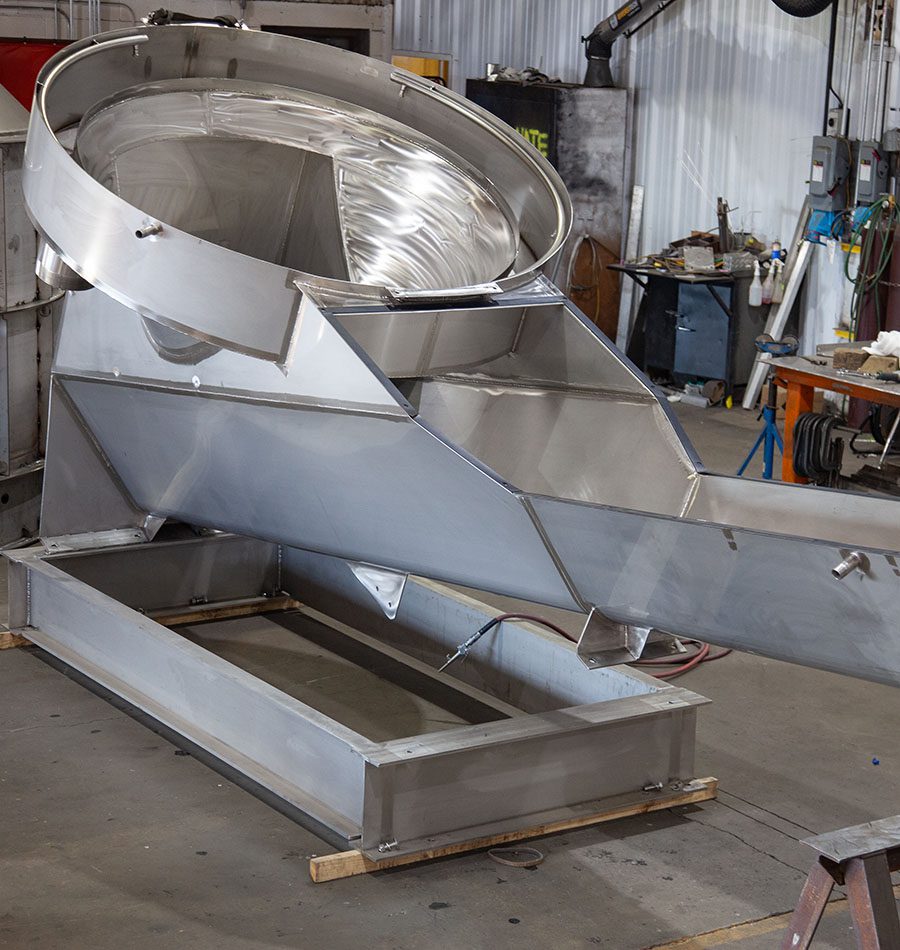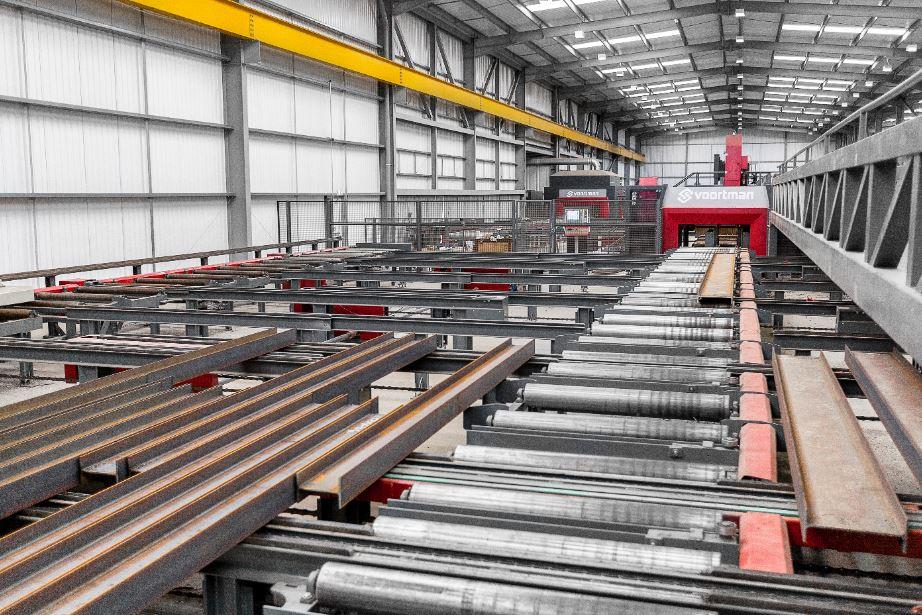Trusted Steel Fixing Providers: Making Certain Architectural Honesty
Trusted Steel Fixing Providers: Making Certain Architectural Honesty
Blog Article
Comprehensive Analysis of Cutting-Edge Techniques in Steel Manufacture Market
As the steel fabrication sector remains to evolve, the combination of advanced strategies has come to be vital for remaining competitive and fulfilling the demands of modern-day manufacturing criteria. From laser cutting innovations to the utilization of robotics and 3D printing in steel production, the landscape of fabrication methods is swiftly altering. With each technology bringing its own collection of obstacles and benefits, a detailed evaluation of these techniques is extremely important for business intending to streamline their processes, boost precision, and eventually, boost the quality of their steel construction result. In this vibrant industry where innovation plays a crucial role, comprehending the subtleties of these cutting-edge techniques is not simply an alternative yet a necessity for those seeking to build in advance in the ever-evolving world of steel fabrication.
Laser Cutting Developments
In the realm of steel fabrication, laser cutting advancements have revolutionized the accuracy and performance of steel shaping processes. By utilizing the power of concentrated laser beams, suppliers can currently accomplish unequaled levels of accuracy when puncturing different sorts of metals. This modern technology makes it possible for complex styles to be performed with minimal product waste, making it an economical service for industries calling for high precision components.
Among the crucial advantages of laser cutting is its capacity to manage a broad range of products, including stainless-steel, aluminum, and carbon steel, with ease. The procedure produces tidy, burr-free edges, eliminating the demand for additional ending up steps. Furthermore, the non-contact nature of laser reducing reduces the threat of material contamination, causing better end products.
Moreover, laser reducing machines can be configured to make swift, precise cuts, dramatically decreasing manufacturing time contrasted to conventional reducing methods. This rate and precision make laser cutting especially suitable for mass manufacturing environments where performance is paramount. As innovation proceeds to advancement, laser cutting is positioned to play an increasingly important duty in the steel fabrication market.

CNC Machining Innovations
The evolution of CNC machining technologies has introduced a brand-new period of accuracy and efficiency in the steel fabrication market. Computer System Numerical Control (CNC) makers have actually revolutionized steel fabrication by providing unequaled precision and repeatability in the production procedure. metal fabrication melbourne. One of the key developments in CNC machining is the combination of sophisticated software application systems that allow real-time tracking and modifications, causing improved efficiency and high quality control
Additionally, the advancement of multi-axis CNC devices has enabled the fabrication of intricate steel parts with detailed layouts that were previously challenging to produce. These machines can execute a vast array of machining procedures, including milling, drilling, transforming, and grinding, all with high degrees of precision.
Moreover, the incorporation of automation and robotics in CNC machining has structured production processes, reduced preparations, and lessened the margin of error. This assimilation of sophisticated innovations not only enhances effectiveness but additionally makes sure constant quality throughout all fabricated steel components. Finally, CNC machining developments remain to drive innovations in the steel construction industry, establishing new criteria for precision and performance.
Automated Welding Technologies
Automated welding innovations have actually reinvented the steel fabrication market, enhancing effectiveness and precision in the welding procedure. These cutting-edge innovations use computer-controlled systems to automate the welding process, bring about higher performance levels and enhanced weld top quality. One of the vital benefits of automated welding is the capability to perform complicated welds with regular accuracy, minimizing the likelihood of errors and revamp.
Robotic welding systems are at the center of automated welding technologies, using unparalleled speed and accuracy. These systems can handle a variety of welding jobs, from straightforward to elaborate, effortlessly (steel fabricators melbourne). By using innovative sensors and software application, robotic welders can adjust to variants in product and joint geometry, ensuring an uniform and trustworthy weld
In addition, automated welding innovations boost office security by minimizing the direct exposure of human welders to dangerous fumes and extreme warm. As the steel fabrication sector remains to develop, integrating automated welding modern technologies will certainly be essential for companies wanting to stay competitive and meet the growing demands for premium bonded products.
Robotics Combination in Construction
Using robotic systems in fabrication processes has become a pivotal strategy for boosting efficiency and precision in modern-day production settings. Robotics combination in steel construction provides a myriad of benefits, consisting of raised performance, enhanced quality assurance, and enhanced safety measures. These innovative robot systems are geared up with sophisticated sensing units and shows abilities, allowing them to execute detailed tasks with a high degree of precision and repeatability.
One of the key benefits of robotics combination in steel fabrication is the capacity to automate repeated tasks, such as product handling, cutting, welding, and setting up click here to read procedures. This not only quickens production cycles but likewise decreases the threat of human error, leading to greater general item informative post high quality. Additionally, robotics can operate 24/7, dramatically improving production outcome and meeting tight project due dates.

3D Printing in Steel Manufacturing
Having reinvented the steel manufacture industry through robotics combination, the blossoming expedition of 3D printing in steel production is poised to further development the world of modern-day production strategies. 3D printing, also known as additive manufacturing, uses unprecedented style flexibility and complexity, enabling the creation of elaborate steel structures that were previously unattainable with standard manufacturing techniques. By utilizing computer-aided style (CAD) software program, suppliers can specifically regulate the layer-by-layer deposition of steel product, causing components with look what i found enhanced geometries and performances.
Among the vital advantages of 3D printing in steel production is its capacity to lower material waste significantly. Unlike subtractive production procedures where excess product is cut away, 3D printing just utilizes the needed amount of steel required for the final component. This performance not only results in cost financial savings yet likewise lines up with sustainable production techniques by lessening environmental impact.
In addition, 3D printing makes it possible for fast prototyping and personalization, permitting the manufacturing of little batches of intricate steel parts with short preparations. As the innovation remains to mature and come to be much more accessible, its assimilation right into mainstream steel fabrication procedures is expected to drive innovation and effectiveness across the sector.
Verdict
In conclusion, the steel fabrication market has seen considerable improvements in strategies such as laser cutting, CNC machining, automated welding, robotics assimilation, and 3D printing. These sophisticated technologies have revolutionized the way steel products are made, leading to increased cost-effectiveness, effectiveness, and precision. Continued investment in these innovative strategies is critical for the sector to remain competitive and meet the demands of modern-day production processes.
As the steel fabrication industry proceeds to progress, the combination of advanced techniques has actually ended up being vital for staying affordable and fulfilling the demands of modern production requirements.One of the essential benefits of laser cutting is its capability to deal with a wide array of materials, consisting of stainless steel, light weight aluminum, and carbon steel, with ease.Automated welding modern technologies have actually transformed the steel manufacture market, enhancing performance and precision in the welding procedure.Having changed the steel construction industry with robotics integration, the expanding exploration of 3D printing in steel production is poised to more advancement the world of contemporary production techniques.In verdict, the steel fabrication sector has seen considerable advancements in methods such as laser cutting, CNC machining, automated welding, robotics integration, and 3D printing.
Report this page